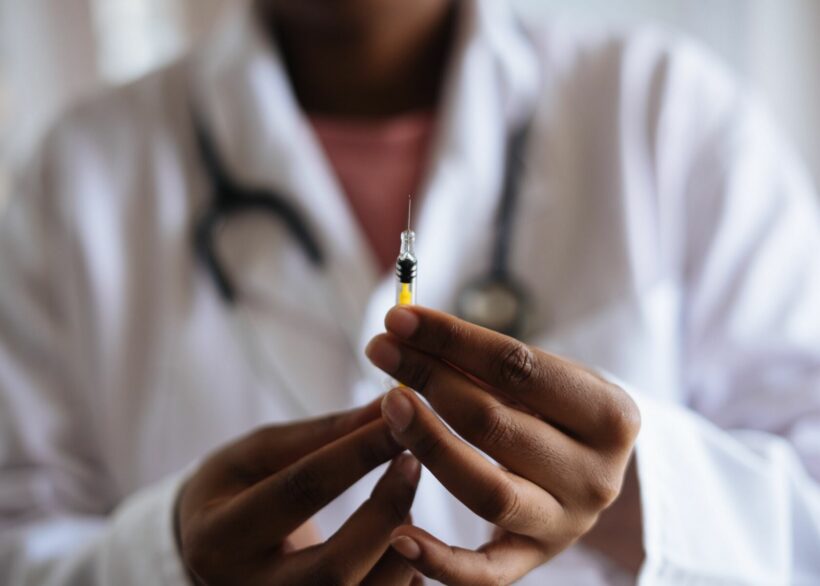The leaders in the race to develop a Covid-19 vaccine

With the coronavirus claiming more than 2.3 million lives, the biggest challenge across the world is developing and distributing a Covid-19 vaccine. Major pharmaceutical companies are now in a race to develop and distribute safe and effective vaccines.
The leaders of the Covid-19 vaccine race…
JOHNSON & JOHNSON
US Pharmaceutical giant Johnson & Johnson has now applied with the US FDA for emergency use authorisation for the company’s new single-dose Covid-19 vaccine.
Preliminary results from a huge international study say that the J&J vaccine was safe and offered strong protection against moderate to severe cases of the coronavirus.
Early indications suggest it doesn’t appear quite as strong as the 2-dose competitors made by Pfizer/BionTech and Moderna, but some of these early assumptions haven’t really compared like-study with like-study.
The J&J vaccine is an adenovirus vector vaccine. It works by taking a piece of DNA from the Covid-19 spike protein and injecting it into an adenovirus, a type of virus typically involved in a common cold.
But in the J&J vaccine, the adenovirus has been genetically modified so that it cannot replicate, and can only act as a carrier, or vector.
The combination of vector virus and Covid-19 DNA is then injected into the body, where human cells read the COVID-19 DNA and begin replicating the spike proteins. The human immune system then recognises those spike proteins and destroys them.
MODERNA & PFIZER/BIONTECH
The Johnson & Johnson technology is slightly different from both the Moderna and Pfizer/BioNTech vaccines, which are called mRNA vaccines.
Those vaccines use RNA instead of DNA, a slightly different genetic code. The labs take RNA from the COVID-19 spike protein, mix it in lipid solution, and inject it into the human cells.
The body recognises the code (mRNA) and starts to replicate the spikes. Again, the human immune system recognises and destroys them.
The Pfizer/BioNTech vaccine still has the transport challenges where it has to be transported and stored at extremely low temperatures.
OXFORD/ASTRAZENECA
The Oxford–AstraZeneca Covid-19 vaccine, codenamed AZD1222, was developed by Oxford University and the British/Swedish multinational AstraZeneca and is given by intramuscular injection, using as its vector a modified chimpanzee adenovirus.
One dosing regimen showed 90% efficacy when a half-dose was followed by a full-dose after at least one month, based on mixed trials with no participants over 55 years old.
NONAVAX
Then there’s the Novavax vaccine, also from the US. It’s a different vaccine based on newer technology, in this case a protein based vaccine.
It involves the spike protein of the virus itself, which is produced and formulated as a nanoparticle type structure. It uses a synthetic coronavirus spike protein to teach the immune system to produce antibodies that can deactivate the coronavirus if a person were to be exposed.
Once injected, it stimulates the immune system to start producing antibody and also induces T-cell immune responses.
SINOPHARM
There are three vaccines in China. On is from Sinopharm who have developed the vaccine called Vero and is based on an inactivated virus. It’s been developed in collaboration with the Wuhan Institute of Virology and the Institute of Biological Products.
This type of vaccine has been tried and tested for decades and the technology successfully used against diphtheria, hepatitis B, polio, whooping cough and tetanus.
Phase III trials for Vero have been conducted in 10 countries worldwide, including the UAE, Bahrain, Peru, Morocco, Argentina, Jordan and Pakistan. One reason for the research outside the People’s Republic is that in China, case numbers dropped so sharply in the summer due to the strict lockdown that it was difficult to obtain any meaningful data at all.
So far, Vero is the only Chinese vaccine where the manufacturer has published official data. Sinopharm has reported a 79% efficacy in an interim evaluation, back in December 2020. The vaccine was licensed in China one day later.
Efficacy data from other countries is up and down, with the Emirates confirming even higher efficacy in their study at 86%.
SINOVAC BIOTECH
The Sinovac Biotech vaccine is called CoronaVac and is also based on inactivated viruses. It has been tested in various phase III trials since the summer, including in Brazil, Indonesia, Bangladesh and Turkey.
Evaluations by Brazilian collaborators suggest an efficacy of up to 78% whilst the Indonesian health authorities reported it around 65% effective.
To put these efficacy ratings into context, although these inactivated virus vaccines are not as effective as the mRNA vaccines approved for use in Europe and the US, the results do exceed measurements that are common for influenza vaccines. Some of those are only 30-60% effective.
Thailand plans to introduce this vaccine despite its moderate efficacy. Malaysia and Singapore are still deciding if they will buy doses for their populations.
Meanwhile, Sinovac is aiming to increase efficacy by prolonging the interval between the two doses, but scientists say prolonging the time between the original vaccination and the booster also increases the risk of possible mutations.
CANSINO BIOLOGICS
Another vaccine is called Ad5-nCoV or Convidecia, where CanSino Biologics worked with the Beijing Institute of Biotechnology. This vaccine is a vector virus vaccine based on an adenovirus type 5.
Here, a harmless transport virus brings non-replicable surface proteins of the Covid-19 pathogen to the human cells and triggers the immune reaction there.
In terms of the way it works, this vaccine is much like the Oxford/AstraZeneca vaccine.
Phase III trials have started in Pakistan, Russia, Mexico and Chile.
A Canadian trial was cancelled because CanSino Biologics hadn’t delivered the vaccine doses as agreed to by its partner, the Canadian Center for Vaccinology. But in China, the vaccine has been administered to military personnel since June 2020 but no recent efficacy data has been released.
SPUTNIK 5
And finally to the Russian Sputnik V, which has been showing high efficacy results after several months of testing and real-life application.
Efficacy results over 90% have surpassed most of the world’s other vaccines at this stage. The Russian jab is another example of an adenovirus vector vaccine, similar to the Oxford-AstraZeneca vaccine.
The news about the vaccines is very fluid and we’re right in the middle of the biggest roll out of vaccines in human history. Despite a lot of misinformation about vaccines, generally… some of it outright nonsense, these Covid 19 vaccines provide the best possibility of slowing down the spread of the virus and keeping millions alive.
The biggest challenge now is for scientists to chase the Covid-19 virus as it mutates, and modify the vaccines to work with the new mutations.
Latest Thailand News
Follow The Thaiger on Google News:


























